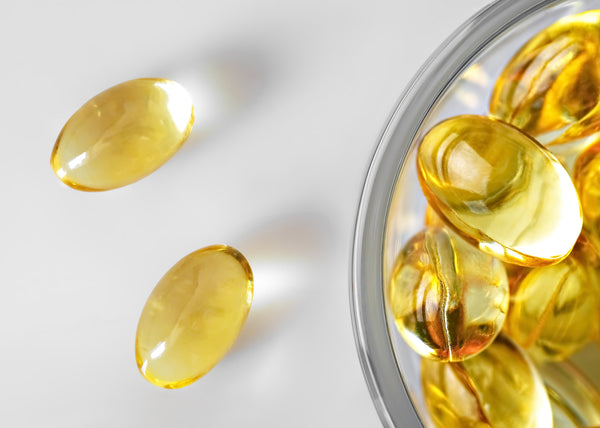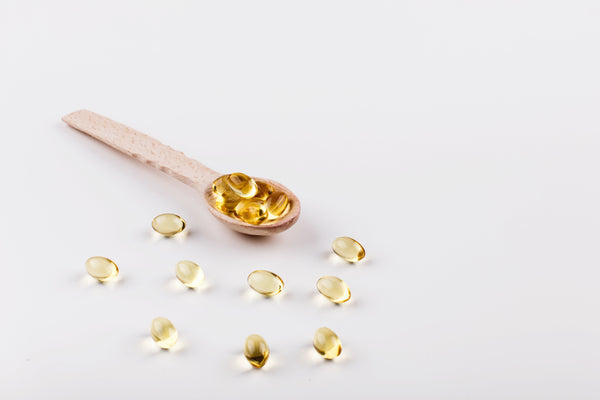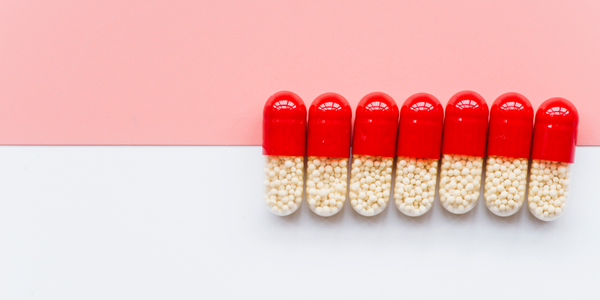Diabetes has become one of the most common lifestyle diseases in recent years, and its prevalence has been rising quickly. Due to the difficulties that resulted from it, mortality rates have also increased. Consequently, it becomes crucial for treating diabetes. Stress management, exercise, physical activity, adherence to medication (if any), and food management are the major principles of managing diabetes. In today’s article, we will be focusing on nutritional strategies that can help you manage your diabetes effectively.
Understanding Diabetes
Let’s first understand how sugar enters our system. One of the main macronutrients found in foods is carbohydrates, which are broken down into glucose every time we eat. This glucose provides us with the energy needed by the cells in our body, tissues, and organs. It is released from food and enters the bloodstream, where it is then transported into the cells with the help of insulin released from the pancreas. Each time we eat any food, the pancreas releases insulin to move the incoming glucose inside the cells of different parts of our body.
When the level of sugar inside the bloodstream exceeds its normal range, it is termed diabetes. This happens due to either inadequate production of insulin by the pancreas, inefficient insulin, or the inability of the cells to respond to insulin (insulin resistance).
Nutritional Guidelines for Diabetes Management
Since our diet directly affects our blood sugar levels, it is important to be very careful with when and what you consume. Here are easy modifications that can make a big difference.
-
Avoid skipping meals
If you thought skipping breakfast was a good idea to avoid that early morning sugar spike, you are greatly mistaken. Skipping breakfast or keeping a long gap between meals can do more harm than good. Eating at long intervals puts you at a higher risk of blood sugar fluctuations. When you do not eat for a long period of time, your blood sugar drops, which leads to excess internal blood sugar production. This phenomenon is also called rebound hyperglycemia or the Somogyi effect.
When you do not eat for long periods of time, you are too hungry by the time you have your next meal and may over-eat. This may lead to a sudden surge of glucose in the blood, which then causes hyperglycemia and may be followed by a crash leading to hypoglycemia. When you eat smaller portions of meals at regular intervals, there is a steady release of glucose, and thereby insulin can manage this small bout of glucose release. By preventing overeating, you are also able to keep your weight in check, thereby helping with weight management.
Similarly, skipping breakfast may increase your risk of developing type 2 diabetes or prediabetes. And if you already have diabetes, skipping breakfast or other meals may result in extremely low or high blood sugar levels.
-
Control portion size
Just like skipping meals or having large gaps between meals can trigger reactive hypoglycemia, eating too much can also spike or crash your blood sugar levels. Excess carbohydrate ingestion puts a metabolic load on the body. Depending on the type of carbohydrate you eat, you may experience a post-prandial sugar rise or reactive hypoglycemia. In cases of reactive hypoglycemia, your pancreas continues to produce insulin even after the high-carb meal has been digested. This results in a drop in blood sugar levels below the normal range. i.e. hypoglycemia. This usually occurs within 2–5 hours after high-carb meal consumption. Hence, it is important to keep the portion size of your meals smaller, which can also help reduce the gaps between meals.
-
Select low glycemic index (GI) foods
Not everything that tastes sweet will cause an increase in blood sugar, and the opposite is also true. The Glycemic Index (GI) of the specific item determines its capacity to raise blood sugar levels, not the sweetness of the food itself. For example, when you eat a slice of white bread, it may not taste sweet but has a GI of 69, which can cause a spike in your blood sugar levels. When you bite into a sweet apple, it may give you a sweet taste, but owing to its low GI of 34, it helps provide stable sugar readings. Moreover, the fiber component also determines the GI of food. The fructose sugar from apples does not cause sugar spikes owing to its fiber content.
So, opt for foods that have a low GI, for example, lentils, skimmed milk, apples, oats, etc., and restrict high-GI foods such as white rice, cornflakes, etc.
Processed foods and refined flour-based products tend to have a high GI/GL owing to their simple (refined) carb content and low fiber content.
-
Lower glycemic load (GL) of foods
You may not be able to change the GI of a particular food, but you can change the overall glycemic load of your meal. While GL is restricted to the capacity of a particular food item to raise your blood sugar levels, Glycemic load stands for the capacity of an entire meal to increase your blood sugar levels. For instance, white bread has a high glycemic index; by having a loaf of bread and jam along with a muffin and a glass of fruit juice as breakfast, you are increasing the glycemic load of the meal, as all the food items are major sources of simple carbs. When you combine bread with fiber and protein, you will be able to lower the glycemic load of the meal. For instance, having a vegetable sandwich stuffed with lots of raw vegetables along with a glass of milk and egg whites will have a lower glycemic load. Basically, the glycemic load takes into account the total carbohydrate in a portion of food together with its ability to spike blood sugar levels.
So try to balance your meals in such a way that the overall glycemic load of the meal is low.
You will be able to do so further by selecting the right kind of carbohydrate in moderate amounts. There are two main categories of carbohydrates: simple (bad) and complex (excellent). Simple carbohydrates are high in calories, but they don't include any vitamins, minerals, or other nutrients. Simple carbohydrates include, for instance, cakes, pastries, sodas, jams, candy, etc. Complex carbs, on the other hand, contain fiber, vitamins, and minerals in addition to energy. Quinoa, oats, whole grains, and other such foods are examples of complex carbohydrates. You need to get about 50–60% of your total calories (energy) from carbohydrates. Make the appropriate decision, please.
-
Include superfoods
While eliminating simple carbohydrates may help you prevent unnecessary sugar spikes, adding certain superfoods like fenugreek seeds, chia seeds, flaxseeds, apple cider vinegar, cinnamon powder, etc. can have hypoglycemic effects, i.e., they act as a natural medicine for lowering excess blood sugar levels. This further helps you achieve stable blood glucose levels. You can sprinkle cinnamon powder on your porridge or yogurt or simply add a pinch of it to lukewarm water and drink. Similarly, you may have 1-2 tbsp of Apple Cider Vinegar in 1 glass of water and have it as your detox drink. Apple cider vinegar containing a culture of beneficial bacteria (the mother) is considered one of the best apple cider vinegars. The cloudy or foggy appearance of apple cider vinegar is called the mother. Apple cider vinegar with mother is full of probiotics, enzymes, proteins, and nutrients. You can buy Apple cider vinegar online or collect it from any supermarket store. You may soak the fenugreek seeds, sprout them, or use the powdered form. Chia seeds can be eaten raw by sprinkling them over your salad or adding them to yogurt after soaking for 30 minutes.
-
Opt for sugar substitutes
Natural sugar substitutes vs. Artificial sugar substitutes
White sugar and jaggery are both made from cane sugar through various processing techniques; therefore, their effects on our blood glucose levels are identical. Therefore, it is not a good idea to substitute jaggery for white sugar if you want to control your blood sugar levels. Similarly, honey has some additional vitamins and minerals, but since it contains glucose, it also has a high glycemic index and needs to be taken with caution.
Artificial sweeteners are yet another choice for reducing additional calories and minimizing total sugar intake. Artificial sweeteners are sugar alternatives that enable you to obtain a sweet flavor without consuming extra calories. As of now, the FDA has approved a few artificial sweeteners that can be used safely. Some of them include aspartame, saccharin, sucralose, neotame, acesulfame-k, stevia, advantage, and monk fruit extract (swingle fruit extract). These artificial sweeteners, although safe, must be consumed in moderation. Also beware, as most of the packaged foods that read "sugar-free" could be loaded with fats. Fat may not directly contribute to diabetes but excess fat leads to obesity and high-fat stores, which get deposited on body cells. This can lead to insulin resistance, thereby increasing blood sugar levels.
Wrapping Up
Dietary modifications are a crucial element of diabetes management. Make the most of the information given in this blog to prevent or control your blood sugar levels. It’s also important to speak with your doctor if you’re dealing with any chronic disease.
References
https://www.mayoclinic.org/diseases-conditions/diabetes/in-depth/diabetes-diet/art-20044295
https://diabetesjournals.org/care/article/31/Supplement_1/S61/24525/Nutrition-Recommendations-and-Interventions-for
https://www.betterhealth.vic.gov.au/health/conditionsandtreatments/diabetes-and-healthy-eating
https://www.nature.com/articles/s41598-019-56541-5
https://www.who.int/news-room/fact-sheets/detail/diabetes
https://www.niddk.nih.gov/health-information/diabetes/overview/what-is-diabetes
https://www.volusia.org/core/fileparse.php/4613/urlt/scanweb.pdf
https://www.sciencedirect.com/science/article/pii/S0002916523058409
https://www.ncbi.nlm.nih.gov/pmc/articles/PMC2584181/






























 DOWNLOAD NOW
DOWNLOAD NOW
